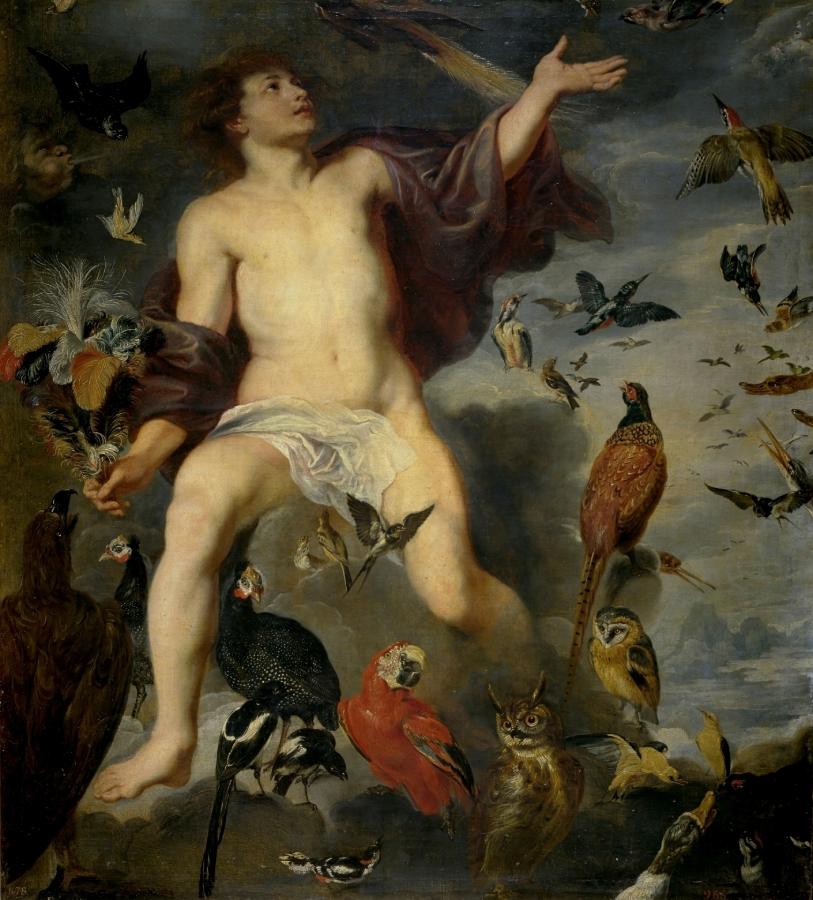Rubens, Peter Paul (1577-1640)
Aeolus
early 17th century
Oil on canvas, 140 x 126 cm
Museo del Prado, Madrid
This work, together with Vulcano y el fuego (P1717), has been considered part of a possible series of four paintings that would have the four elements as the common thread. In 1995, Matías Díaz Padrón attributed these two paintings to the hand of Erasmus Quellinus II (1607-1678). The birds painted on the canvas have also been the subject of debate: Alfred Weil proposed Frans Snyders (1579-1657), but Díaz Padrón affirmed that the artist in charge of painting them was Paul de Vos (1595-1678).
The diverse pictorial invoice between the present work and Vulcano y el fuego reinforces the idea that several hands participated in this probable series of four paintings dedicated to representations of the four elements.
As in Vulcano y el fuego, this painting is assigned to ‘follower of Rubens‘ since it cannot be verified that it was authored by Erasmus Quellinus II or that the paintings were supervised by Rubens in his workshop.
Aeolus -not to be confused with the son of Helen and Orseis or with the son of Poseidon and Melanippe- was the son of Hipotes and king of the floating Aeolian islands, located in the Tyrrhenian Sea. Despite being a mortal, Zeus granted him control of the winds as a result of a love affair they had. For this reason, it is common to find Aeolus in visual culture, personified in a naked young man with medium length hair, as a representation of the wind or, also, of winter.
On the canvas, Aeolus appears suspended in the air, his private parts covered by a white cloth and wrapped in a violet-toned cloth. His right hand holds several bird feathers while with his left he interacts with the diversity of winged animals that surround him. In the overcast area on the left, an infantile face emerges from one of the clouds making an effort to blow.
This way of representing Aeolus is reminiscent of a painting by Martin de Vos (1532-1603), El Aire, kept in the Museo Nacional del Prado (P3328).
Muñoz Baudot, Eduardo, ‘Seguidor de Rubens. Eolo’ En: El factor Prado: los depósitos del Museo Nacional del Prado, Museo de Bellas Artes de Asturias, 2022, p.42-45 nº 6. (MNP)
